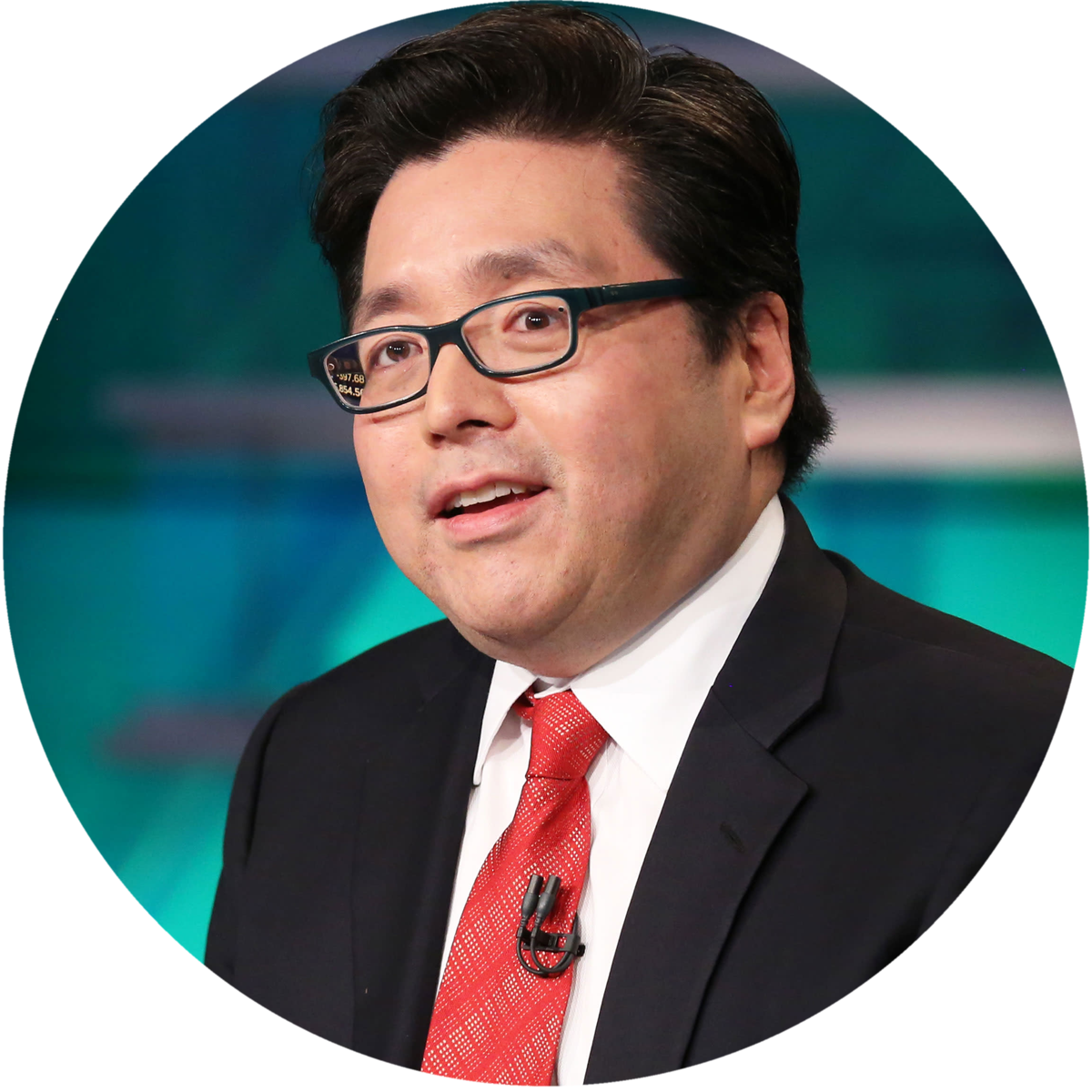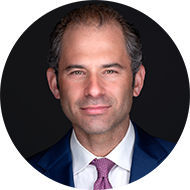Endless equations
And tugging persuasions
Doors open up
To interpretation
– “Dance of the Clairvoyants”, Pearl Jam
It is well appreciated that markets are a “forward discounting mechanism”, with a solid track record of sniffing out turns and shifts in the economy and company fundamentals, long before real data itself confirms these changes.
The equity, bond, and even commodity markets’ ability to see into the future, doing the “Dance of the Clairvoyants” as Eddie Vedder might call it, is one reason why markets are often considered leading indicators for the economy (for one of the most inspiring reads about the market’s ability to early-detect major shifts in events, read the legendary Barton Biggs’ Wealth War and Wisdom).
When thinking about the economic predictions from equity markets, the message from major indices can be powerful, such as peaks in equity markets prior to recessions or troughs in equity markets long prior to an improvement in data or sentiment.
But equity markets contain much more information than just the level of overall index, with an abundance of information and signals under the surface of the market. Much can be gleaned from analyzing what kind of stocks are leading or lagging the market. These leaders and laggards can send important signals about two important factors: investors’ risk appetite and investors’ expectations for future growth.
The conclusion from the analysis below is that risk appetite has deteriorated, possibly indicating less confidence about the future or tighter liquidity, while signals for growth expectations have slowed but have not quite broken down enough to suggest imminent cuts to estimates for the economy and earnings.
The message about growth expectations will be the most critical to watch in the coming months.
Rising growth estimates have been a key feature of equity market strength in 2023. Partially confirming equities’ better trading this year, 2023 GDP growth forecasts have gone from +0.25% to start the year to +2.0% today. S&P 500 EPS forecasts for 2023 and 2024 have been relatively flat all year, recently drifting higher, but compared to 2022’s downward revisions, this earnings resilience has been a reprieve for markets.
Assessing market leadership can be a helpful tool to determine if this recent period of upward revisions can continue, supporting overall markets, or if we could see a return to downward revisions, presenting a headwind for markets.
So, let’s do the “Dance of the Clairvoyants” and see what messages the equity market leaders and laggers could be sending us about the future path for the economy and broad equity indices.
Risk Apettite Signals
We can assess riskappetite in the market by seeing how the highest risk, most speculative, or lowest quality stocks in the market are performing. When investors are clamoring for risk, because they are in an optimistic mood and may be getting some kind of policy/liquidity support, we often see risky parts of the equity market outperform, like small caps, high beta, speculative tech, and recent IPOs.
When these cohorts of stocks are trading weak on an absolute basis or relative to the broader market, it can often be a sign that investors are wary of taking on too much risk, possibly because they are increasingly uncertain about the future or because liquidity is tightening.
In looking at these riskier cohorts today, we can see signs of waning risk appetite since early August, a shift from the April-July risk-on rally. This fading risk appetite could suggest that the recent choppiness in broad equity market indices could continue in the near term.
One of the most important relationships we have been watching is High Beta stocks vs. the S&P 500. High beta stocks have amplified volatility vs. the broader index, with both bigger rallies and bigger drawdowns.
In the chart below you can see how High Beta has been underperforming the S&P 500 since mid-July and has already undercut its recent August low.
The most important observation from this chart is the divergence circled in red. In July, High Beta made a new absolute high for 2023, but it did not make a new relative high vs. the S&P 500 (a similar dynamic happened in 2021, preceding the weak trading of 2022). Divergences often lead trend changes.
High Beta Underperforming and Undercutting August Low
S&P 500 High Beta ETF (SPHB) Absolute (Top) and Relative to S&P 500 (Bottom)
Source: Bloomberg, NewEdge Wealth, as of 9/22/23
A similar message about flagging risk appetite can be taken from the performance of recent IPOs, which are often riskier, more speculative businesses. IPOs have typically done well in risk-on times like 2H20 and 2021, when investors are feeling confident about the future and liquidity is abundant. Today, IPOs have been underperforming the S&P 500 since late July.
Recent IPOs Stumbling Again, Watch August Lows
Renaissance IPO ETF(IPO) Absolute (Top) and Relative to S&P 500 (Bottom)
Source: Bloomberg, NewEdge Wealth, as of 9/22/23
The risk-on/risk-off message from small caps, like the Russell 2000 index, is a bit muddier, as small caps have underperformed in powerful, risk-on markets like 2019 and 2021. However, we have typically seen small caps outperform coming out of major market and economic lows, like 2009 and 2020, as policy support and a coming turn in the economy provide relief for these companies, which tend to have higher leverage levels and earnings volatility. The lack of small cap participation in the rally since the October 2022 lows has been a glaring absence compared to past major market lows.
Small Caps Continue to Struggle
Russell 2000 Absolute (top) and Relative to the S&P 500 (bottom)
Source: Bloomberg, NewEdge Wealth, as of 9/22/23
Overall, the message from the markets is one of deteriorating risk appetite, which possibly signals growing uncertainty about the future and tighter liquidity conditions, while also suggesting that recent market volatility could continue, at least until we see some stabilization in these riskier pockets of the market.
Growth Expectations Signals
As mentioned above, the message from market leadership about growth expectations is likely the most important for the future path of markets and the economy.
Market leadership has a way of “sniffing out” when growth expectations are set to rise for the economy and earnings. Cyclical sectors that do better in a stronger economy often outperform before a turn in economic growth forecasts and long before the data turns itself. The inverse is true, with economically sensitive cohorts of the market beginning to underperform before economic forecasts and data turn lower.
A simple heuristic, which is helpful but not always true in the short run, is that cyclicals tend to outperform when growth estimates are set to rise and defensives outperform when growth estimates are set to fall.
This leadership analysis is a helpful “gut check” when market emotions and estimates are overly sour or celebratory.
One ratio we are watching closely is Equal Weight Consumer Discretionary vs. Consumer Staples (equal weight to remove the outsized impact of mega-cap discretionary stocks like Tesla and Amazon). This ratio compares cyclical Discretionary stocks that do best in a strong economy to defensive Staples stocks that tend to have more resilient earnings in a weak economy.
Below you can see how this Discretionary vs. Staples ratio deteriorated in late 2021 “sniffing out” the coming cuts to consumer spending estimates over the course of 2022, but also how this ratio improved in late 2022 “sniffing out” the coming increases to estimates over the course of 2023.
Today this Discretionary vs. Staples ratio has yet to break down, even with the recent weakness in markets, but this will be a critical relationship to watch.
Discretionary vs. Staples a Key Watch Item for the Path of Consumer Spending
Equal Weight Consumer Discretionary vs. Consumer Staples (black) and Bloomberg Consensus Forecast for 2023 Household Consumption in Real GDP (blue)
Source: Bloomberg, NewEdge Wealth, as of 9/22/23
We can see a similar dynamic with another defensive sector, Utilities, which outperformed the S&P 500 in 2022 as growth estimates were cut and underperformed in 2023 as growth estimates were raised. In September, Utilities have been outperforming the S&P (shown with the inverted black line below, so a falling line signals outperformance), but it is too early to call a major trend change.
Defensive Utilities Relative Performance Lead GDP Growth Estimate Revisions in 2022 and 2023
Utilities Sector Relative to the S&P 500 (black, inverted) and 2023 Bloomberg Consensus GDP Forecasts
Source: Bloomberg, NewEdge Wealth, as of 9/22/23
The message from both Discretionary vs. Staples and Utilities vs. the S&P is that we have started to see some outperformance by the defensive Staples and Utilities, but not enough to call a trend change, meaning the market has yet to send a dominant signal that it is growing concerned about economic growth forecasts and data.
These ratios, along with other intra-sector ratios looking at cyclicals vs. defensive stocks (like Semiconductors vs. Software within the Tech sector and Machinery vs. Waste in the Industrials sector), will be critical watch items to judge the market’s outlook for growth. Resilience in these ratios could suggest that growth itself can remain resilient, while deterioration in these ratios could be an early indicator of coming estimate cuts.
Overall, we will continue to monitor all of the ratios mentioned above to look for early signs of major trend changes in both the economy and markets.
Top Points of the Week
By Austin Capasso
1. Equities Down on the Week- Global equity markets closed the week broadly lower. The US underperformed global markets, dragged down by pronounced weakness in the Technology sector and Russell 1000 Growth stocks, both down over 3% as the pressure from higher interest rates hurt valuations.
2. Central Bank Bonanza- It was a busy week for central banks around the world, with most major central banks keeping rates unchanged while also sending hawkish, “higher for longer” or “more work to be done” messages.
The Fed keeps rates unchanged – The Fed left rates unchanged at September’s FOMC meeting on Wednesday at 5.5% for the Fed Funds Rate Upper Bound. The Fed also updated its Dot Plot and Summary of Economic Projections, which sent a hawkish message to markets. The 100 bps of rate cuts that were forecasted by the median dot in 2024 was reduced to 50 bps, which dented market hopes that the Fed could shift to an easier policy stance in the near term. Chairman Powell signaled the need for higher for longer rates as growth remains robust, the labor market remains tight, and inflation remains above their 2% target (the target is to get there by 2026).
Bank of England (BOE) leave rates unchanged – The BOE surprised markets after leaving the key interest rate unchanged at 5.25% in a 5-4 split vote, likely due to Wednesday’s inflation data that came in slightly below expectations. This decision puts an end to the prior 14 consecutive rate hikes the BOE has implemented over the course of the last 2 years. The BOE, however, maintained the optionality to raise rates if inflation does not decline, and to reach an interest rate that is “sufficiently restrictive for sufficiently longer.” The BOE lowered the GDP forecast to 0.1% and expects inflation to continue to moderate towards the target by the end of 2024.
Bank of Japan (BOJ) leaves rates unchanged – The BOJ left their key interest rate unchanged and will continue to maintain an ultra-loose policy due to “extremely high uncertainties” around Japan’s domestic and global growth. Short term interest rates sit at -0.1% and the 10-year Japanese government bond yield sits at 0%. In light of this news, the Yen sank to 148.7 to the USD.
Central Banks in Sweden, Norway, and Switzerland rate decisions – The Swiss National Bank (SNB) surprised markets by leaving their interest rate unchanged at 1.75%. Before the meeting, there was a 25 bps hike fully priced in. The SNB, however, did not rule out future rate hikes and would intervene in the foreign exchange market if warranted. Both Sweden and Norway raised their key interest rates by 25 bps as expected to 4.0% and 4.25% respectively. After the decisions, the Swiss franc fell sharply and the Swiss 10-year bond yield jumped to its highest level since April, while the Norwegian crown and Swedish krona both edged higher to the US dollar and Euro.
Brazil’s Central Bank cuts rates by 50 bps – Brazil’s central bank cut the Selic (its benchmark rate) by 50 bps, as expected, to 12.75% for the second consecutive time and signaled it will continue the same pace of monetary easing through the end of the year.
Turkey’s Central Bank hikes 500 bps – Turkey’s central bank hiked a lofty 500 bps to bring their key interest rate to 30%. This is the second consecutive month the central bank implemented an aggressive hike in efforts to tighten policy and slow inflation. Turkey has now hiked an eye popping 2,150 bps total since June. The Turkish lira became weaker and pushed the USD higher.
3. US 10-year yield hits highest level since 2007 – After the Fed’s rate hike decision, US yields continued higher with the 10-year yield reaching 4.492, a level not seen since 2007. Initial jobless claims reaching their lowest level since January and forward guidance from a higher for longer Fed pushed yields higher across the board. Yields on the 5-year note and 30-year bond also reach their highest levels since 2007 and 2011 respectively. The 2-year Treasury hovered around its highest level since 2006 at 5.142%.
4. Credit card losses on the rise – Credit card losses currently sit at 3.63%, which is a 1.5% increase from their bottom. Credit card companies are racking up losses at the fastest pace in almost 30 years, outside of the Great Financial Crisis. This is unusual outside of an economic downturn, although these losses have been rising rapidly since Q1 of 2022. Goldman Sachs predicts that credit card losses will continue to climb into the end of 2024 and early 2025. This is an important watch item to see the future impact it brings onto the consumer.
5. IPO market is starting to open – The IPO market was previously frozen for 21 months, but recently fresh IPOs from Arm, Instacart and Klaviyo came to market. The initial “pop”—the difference between the IPO price and the price of the stock when it is free to trade—was for all three companies between 20% and as high as 40%. The IPOs were “successful,” although as the week progressed, ARM, Instacart and Klaviyo fell in line with broader market weakness reacting to rising Treasury yields. The weakness in the stocks post-IPO indicates that investors are concerned about longer-term valuation prospects of these companies.
6. Economic data for the week ahead – Next week is filled with important economic data that will give us a look into the housing market, the health of the US economy, and the US consumer as a whole. The marquee items for next week include the US consumer confidence, durable goods and orders, a revision to GDP, personal spending and income, and a reading on the PCE index.
IMPORTANT DISCLOSURES
Abbreviations/Definitions: BOC: Bank of Canada; BOE: Bank of England; BOJ: Bank of Japan; CB: central banks; Dot Plot: The Fed dot plot is published quarterly as a chart showing where each of the 12 members of the FOMC expect the federal funds rate to be for each of the next three years and the long term; EPS: earnings per share; FOMC: Federal Open Market Committee; Fed’s Summary of Economic Projections (SEP): FOMC participants’ projections for GDP growth, the unemployment rate, inflation, and the appropriate policy interest rate; GDP: gross domestic product; IPO: initial public offering; PCE: personal consumption expenditures; Powell: Jerome Powell, Chair of the Board of Governors of the Federal Reserve System; PMI: Purchasing Managers’ Index
Index Information: All returns represent total return for stated period. S&P 500 is a total return index that reflects both changes in the prices of stocks in the S&P 500 Index as well as the reinvestment of the dividend income from its underlying stocks. Dow Jones Industrial Average (DJ Industrial Average) is a price-weighted average of 30 actively traded blue-chip stocks trading New York Stock Exchange and Nasdaq. The NASDAQ Composite Index measures all NASDAQ domestic and international based common type stocks listed on the Nasdaq Stock Market. Russell 2000 is an index that measures the performance of the small-cap segment of the U.S. equity universe. MSCI International Developed measures equity market performance of large, developed markets not including the U.S. MSCI Emerging Markets (MSCI Emerging Mkts) measures equity market performance of emerging markets. Russell 1000 Growth Index measures the performance of the large- cap growth segment of the US equity universe. It includes those Russell 1000 companies with relatively higher price-to-book ratios, higher I/B/E/S forecast medium term (2 year) growth and higher sales per share historical growth (5 years). The Russell 1000 Value Index measures the performance of the large cap value segment of the US equity universe. It includes those Russell 1000 companies with relatively lower price-to-book ratios, lower I/B/E/S forecast medium term (2 year) growth and lower sales per share historical growth (5 years). The BBB IG Spread is the Bloomberg Baa Corporate Index that measures the spread of BBB/Baa U.S. corporate bond yields over Treasuries. The HY OAS is the High Yield Option Adjusted Spread index measuring the spread of high yield bonds over Treasuries. S&P Equal Weight Index (S&P EWI) is the equally-weighted version of the widely regarded S&P 500® Index, which measures 500 leading companies in leading U.S. industries. The S&P EWI has the same constituents as the capitalization weighted S&P 500® Index, but each company in the S&P EWI is allocated a fixed weight, rebalancing quarterly.
Sector Returns: Sectors are based on the GICS methodology. Returns are cumulative total return for stated period, including reinvestment of dividends.
The views and opinions included in these materials belong to their author and do not necessarily reflect the views and opinions of NewEdge Capital Group, LLC.
This information is general in nature and has been prepared solely for informational and educational purposes and does not constitute an offer or a recommendation to buy or sell any particular security or to adopt any specific investment strategy.
NewEdge and its affiliates do not render advice on legal, tax and/or tax accounting matters. You should consult your personal tax and/or legal advisor to learn about any potential tax or other implications that may result from acting on a particular recommendation.
The trademarks and service marks contained herein are the property of their respective owners. Unless otherwise specifically indicated, all information with respect to any third party not affiliated with NewEdge has been provided by, and is the sole responsibility of, such third party and has not been independently verified by NewEdge, its affiliates or any other independent third party. No representation is given with respect to its accuracy or completeness, and such information and opinions may change without notice.
Investing involves risk, including possible loss of principal. Past performance is no guarantee of future results.
Any forward-looking statements or forecasts are based on assumptions and actual results are expected to vary from any such statements or forecasts. No assurance can be given that investment objectives or target returns will be achieved. Future returns may be higher or lower than the estimates presented herein.
An investment cannot be made directly in an index. Indices are unmanaged and have no fees or expenses. You can obtain information about many indices online at a variety of sources including: https://www.sec.gov/fast-answers/answersindiceshtm.html.
All data is subject to change without notice.
© 2023 NewEdge Capital Group, LLC
The post Dance of the Clairvoyants: What Equity Market Leadership is Telling Us About the Economy appeared first on NewEdge Wealth.























































